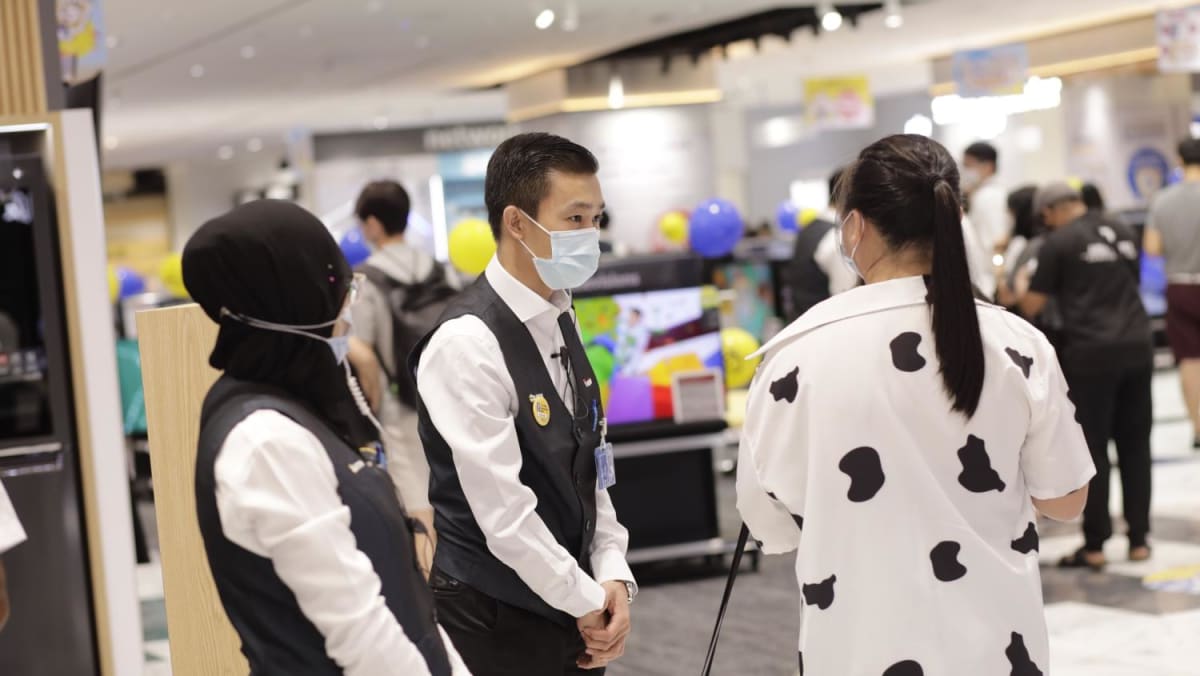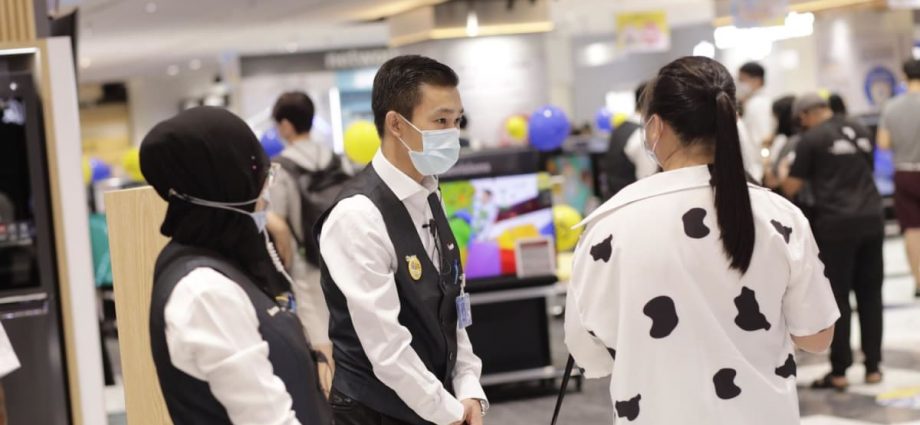
After the PWM was announced, the Singapore Retailers Association (SRA) said in a media statement that the recommendations are “a step in the right direction to help rebuild retail as an attractive career choice”.
“However, the acute manpower shortage is a critical issue facing most if not all retail businesses and if left unaddressed in the immediate term, Singapore will be hard pressed to retain its repute as a vibrant shopping and lifestyle destination with superior service delivery,” the association said in a Facebook post.
Businesses CNA spoke to said that it has always been challenging to find Singaporeans or permanent residents to take up frontline sales jobs.
Mr Roland Seah, whose shop Green Chapter sells aquarium products, said that it’s hard to hire local workers even when he offers a monthly salary of more than S$2,000, which is higher than the PWM baseline.
When asked how he solves his manpower woes, he said that he mans the store himself: “We deal with it by working longer hours … it’s the same problem for all retail businesses. In the end who works? The boss works.”
An additional problem is that workers often leave after a short stint, which means he has to keep re-training new workers, he said.
Other retailers told CNA that they are already paying above the baseline PWM wage, and they also provide training and career pathways required by the PWM.
Under the PWM, workers now have to take at least one Workforce Skills Qualifications training module for all job roles under the PWM. TCR has mapped out the frontline operational and supervisory job roles within the retail sector to provide a career progression pathway for such workers.
Furniture chain Courts said that the PWM will not affect their operations as the company already has policies that fulfil the PWM requirements, including training programmes to ensure its staff “are given equal opportunities to explore different roles and departments”.
“Even during the circuit breaker, there wasn’t any retrenchment and we ensured our staff are all well taken care of, retaining their rice bowls throughout the tough period,” said a spokesperson.
Mr Terence Yow, managing director of local footwear distributor Enviably Me, pointed out that the cost of frontline businesses like retail was always high, and sales volumes have not recovered to pre-COVID levels. The pandemic wiped out already lean margins, he added.
“PWM as it stands … for small frontline SMEs (it does) not have a significant impact because we are faced with far bigger challenges and our salaries are, a vast majority, well above (PWM) already,” he said.
“What we are much more worried about is whether there’s a supply of workers, whether inflation can be tamped down, costs of logistics, whether we can get tourism back, whether there’s going to be a recession, which is putting a big dampener on consumer confidence, and rental charges, which are coming back.”
He added that to attract and retain workers, he already has to provide training, career pathways and sufficient days off, as well as intangibles like team building programmes.
Aldys Kong, country HR manager for IKEA Singapore said that the PWM for the retail sector is a welcome move, but admits that the furniture chain also faces challenges recruiting and retaining talent.
“Some younger workers take a short-term view to retail work and may overlook the long-term possibilities in it,” she said.
One way IKEA deals with this is by offering flexibility to its workers. IKEA hires a large pool of part-timers, making up about 40 per cent of its workforce, and permanent part-time workers enjoy the same benefits as full-time staff, said Ms Kong.
This includes paid leave, medical and insurance benefits, annual health screenings and long service awards, among others.
“Our part-time co-workers include mothers, students, re-employed retirees and some experienced retail professionals,” she said.
“Some co-workers dedicate as few as 10 hours a week to working at IKEA while others are scheduled for up to 35 hours a week. We offer seasonal/weekend work options where we hire co-workers during peak seasons or weekends to supplement our existing staff strength.”
Labour economist Walter Theseira said that while wages are rising due to inflationary pressure at the moment, it is unclear if those market forces alone will lead to convergence of retail wages with the median wage.
“The purpose of the PWM is to target convergence more explicitly, since there is a risk that inflation adjustments for wages simply only allow real wages to be stagnant, or even worse, decline,” said Associate Professor Theseira, who is from the Singapore University of Social Sciences.
“Of course, the PWM is also meant in theory to support that convergence by improving productivity and skills of PWM-covered workers. But the latter task will likely be challenging.”
While most of the workers CNA spoke to earn above the baseline wage, there are many advertised jobs offering hourly rates of S$8.
Not all will have to adhere to the PWM minimum as it only applies to companies hiring foreign workers. The Tripartite Cluster for Retail Industry said that they expect the wages of other local workers in Singapore to catch up with the PWM rate due to market forces.
Assoc Prof Theseira said that the PWM can raise the wages of workers at firms that do not employ foreign workers as long as there is strong competition in the labour market for such workers, and they can easily move between PWM and non-PWM jobs.
“There was certainly hope that the introduction of the first PWMs almost a decade ago would spark a general increase in wages at the lower end in Singapore, but the need to expand the PWM to cover a larger proportion of low wage jobs suggests that this competitive effect has been quite muted,” he said.
“Clearly, it’s necessary to cover a much larger fraction of workers for competition to raise the wages of non-covered workers.”

